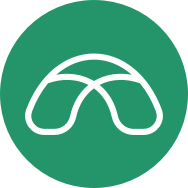A Home Equity Line of Credit (HELOC) can be a useful way for homeowners to access some of the equity in their home. But it’s really important to understand how it works and what you’re getting into before you decide to use one. Here are 5 key things you need to know about HELOCs:
1. What is a HELOC?
A HELOC is a type of loan that allows you to borrow against the equity you’ve built up in your home. A HELOC is different from a traditional fixed-amount loan because it gives you a line of credit that you can draw from as you need it, up to a certain limit. It functions like a credit card, with a revolving balance that you can borrow from, repay, and borrow from again during the draw period.
Key point: A HELOC offers flexibility in borrowing, so it’s ideal for ongoing expenses like home improvements or education costs.
2. The draw and repayment periods
A HELOC typically has two phases: the draw period and the repayment period. During the draw period, which usually lasts 5 to 10 years, you can borrow from the line of credit and make interest-only payments. After the draw period ends, the repayment period begins, typically lasting 10 to 20 years. During the repayment period you can no longer borrow and you have to repay both the principal and interest.
Key point: Understanding the terms of the draw and repayment periods is critical to managing your HELOC effectively.
3. Variable interest rates
Most HELOCs have variable interest rates, which means the rate can go up or down based on changes in the prime rate or other benchmark rates. This variability can affect your monthly payments, making them higher or lower over time. Some lenders may give you the option to convert part of your balance to a fixed-rate loan, so you have a better idea of exactly what your payments will be.
Key point: Be prepared for potential changes in your interest rate and monthly payments, and consider the risks of variable rates.
4. Costs and fees
While HELOCs can be cost-effective, they do have various fees and costs. They often include application fees, annual fees, appraisal fees, and closing costs. Some lenders also charge early termination fees if you close your HELOC early. Be sure to read the fine print and understand all the potential costs before you commit to a HELOC.
Key point: Factor in all potential fees and costs when you’re evaluating the overall affordability of a HELOC.
5. Risk of foreclosure
Since a HELOC uses your home as collateral, failing to make payments can result in foreclosure. That means that if you’re unable to repay the amount you borrowed against the HELOC, the lender can seize your home. So it’s extremely important to borrow responsibly and make sure that you can manage the payments, especially during the repayment period.
Key point: Always carefully consider your ability to repay the HELOC to avoid the risk of losing your home.



